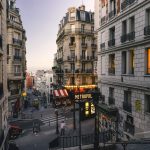Area: In 1947, Jeddah occupied an area of 1 km2, but following its civic and architectural development, this area has increased to 560 km2 and its Red Sea paved coastline stretches 80 km from north to south.
Population: In 1947 Jeddah's population was 30,000 people. Now it is over one and a quarter million.
Religion: Islam is the official religion of Saudi Arabia and culture revolves almost entirely around it - two of Islam's holiest sites are in the country, and it is considered the birthplace of the religion. A monotheistic religion, Islam's holy book is the Qur'an, and Friday is its Sabbath day. Every day, five times a day, Muslims are called to prayer from the minarets of mosques that dot the country. Islam derives from the same monotheistic roots as Judaism and Christianity, and Muslims generally regard Christians and Jews with respect - in Islam, Jesus is regarded as one of the Prophets of Allah, and Jews and Christians are considered fellow 'people of the Book'. Mohammed was the last Prophet, and it was to him that Allah dictated the Qur'an. The Qur'an is Saudi Arabia's constitution, and Shari'ah (Islamic law) is the foundation of its legal system.
Language: Arabic is the main language in the country and is the language used in all official departments. English is the second language and can be seen on street signs and advertisements. Most of the younger and many of the older generations speak English moderately well so communication is not a problem.
History: Jeddah has grown from humble origins. It began about 2,500 years ago as a tiny fishing settlement, established by the Quada's tribe. In AD647, Caliph Osman Ibn Affan chose Jeddah as the main port for the city of Makkah, and it became known as Bilad al Kanasil -- the City of Consulates. In the 16th century, the Ottomans built a stone wall around the town, in order to fortify it against attacks from the Portuguese. Originally, four gates were set in these walls, Bab Sherif opening towards the south, Bab Makkah facing east, Bab Madinah in the north wall and a west gate facing the Red Sea. Jeddah remained a fortified, walled town for centuries of Ottoman influence and was not released from Turkish rule until 1915. Further evidence of Turkish influence can be seen in Jeddah's architecture. The buildings of old Jeddah were tall and graceful, constructed of coral limestone and decorated with intricately beautiful wooden facades, known as rawasheen (singular roshan). These were designed not only to break up the sun's glare, but also to take advantage of the cooling sea breezes when the inner windows were opened. One cannot help but feel that, with the enclosure of the town within high, fortified walls, the sea breezes may not have stood much chance of reaching Jeddah's early inhabitants; hence their penchant for building their houses tall and for sleeping on the roofs on hot summer nights. The origin of the city's name poses an interesting dilemma for etymologists. Juddah (pronounced Jiddah) in Arabic means seashore, which seems logical enough, but the school of thought which prefers Jaddah or grandmother, is given credence by the traditional location of Eve's tomb within the city. Jeddah is, in fact, incorrect, but is popularly used by most non-Saudis living there.
Transportation: Facilities are available in the Kingdom either by air where daily flights serve all the main cities or by land through a number of air conditioned buses. Car rentals are available and are a better option if traveling by land in or around Jeddah. Inside Jeddah the easiest most of transportation is the taxi service that is reasonably priced and highly available.
Climate and Temperature: Jeddah's climate is generally humid reaching 98% sometimes. Average temperatures are 23o C in January and 32o C in July.
Currency: The Saudi Arabian currency is the Riyal, which is divided into 100 halalas. Notes are 1, 5, 10, 50, 100, and 500. There is a coin system but it is rarely used except of telephones. One US Dollar is approximately worth 3.75 Saudi Riyals.
Holidays: Saudi Arabia's only holidays are Islamic though they do celebrate national days and events. The larger holiday revolves around Ramadan, a month when everyone fasts between sunrise and sunset to conform to the fourth pillar of Islam. During Ramadan life reflects the fast and it is expected that non-Moslems respect the fast and refrain from eating, drinking or smoking in public during the day. Ramadan ends with a huge feast, Eid Al-Fitr, which starts with a large prayer gathering then visits to relatives and friends. Presents are usually given to children and close family. The holiday lasts for three days. Eid Al-Adah, is the other big feast of the year, and marks the time when Muslims complete the first day of the pilgrimage to Mecca. The only non-religious festival is the Jinadriyah National Festival of folklore and culture, held every February.
Facts: Time: GMT/UTC plus 3 hours.
Electricity: 110V, 50Hz though you will find 220V outlets.
Weights & Measures: Metric.
It is also a one hour drive to the Holy Makkah, if anyone wants to go for a visit or OMRA. The average cost for OMRA by a Limousine (door to door) through the Hotel is SR 400. Other recommended option is to use the general transportation from Cornish Bus terminal (near the Intercontinental Hotel).





